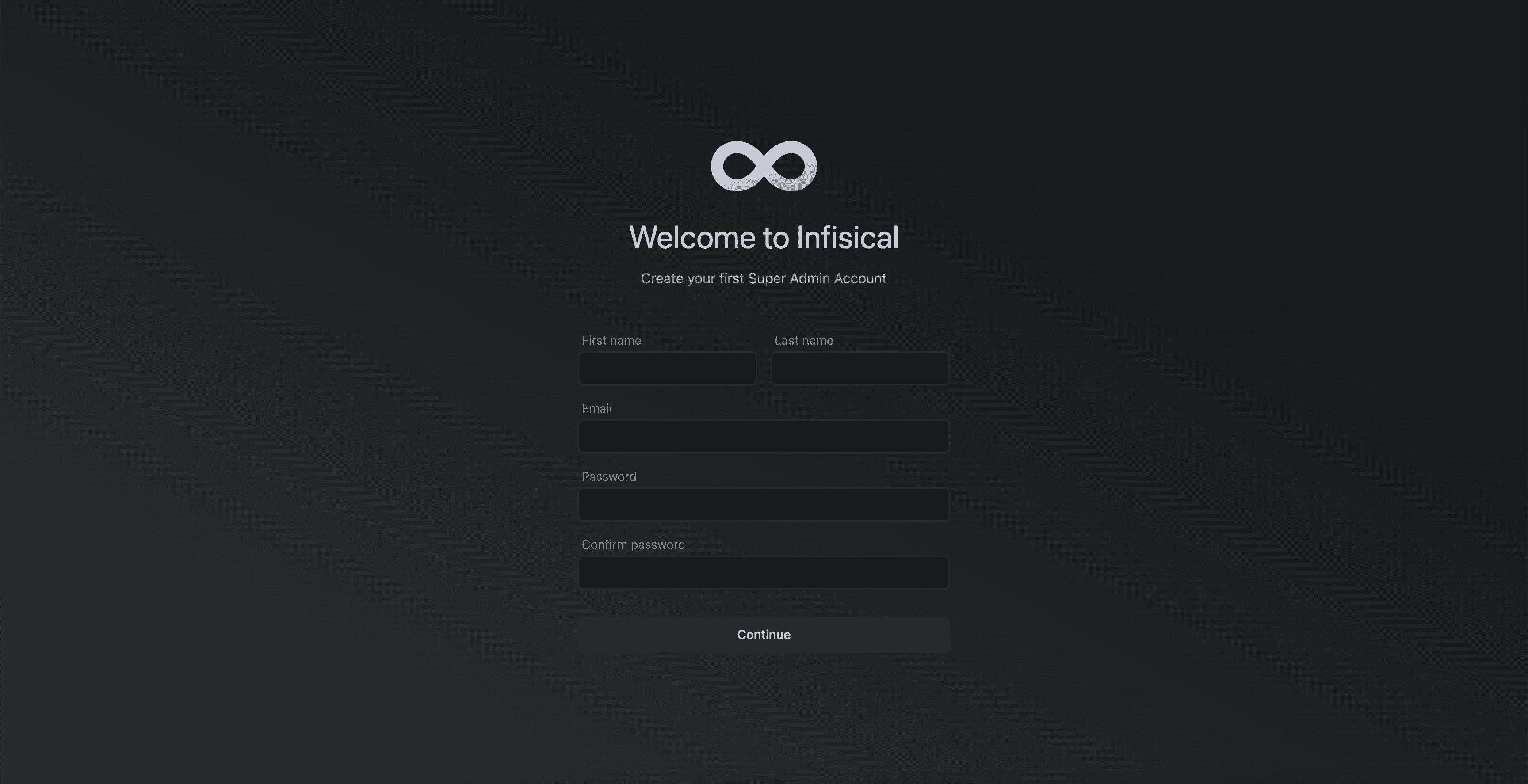- Basic knowledge of Docker
- Have Docker installed on your system. If not, follow the installation guide here.
1
Pull the Infisical Docker image
Visit Docker Hub and select a version of Infisical image you would like to deploy.
Then run the following command in your terminal to pull the specific Infisical Docker image.Remember to replace
<version> with the docker image tag of your choice.2
Start Infisical
For a minimal installation of Infisical, you must configure Once the container is running, verify the installation by opening your web browser and navigating to 
ENCRYPTION_KEY, AUTH_SECRET, DB_CONNECTION_URI, SITE_URL, and REDIS_URL. View all available configurations.We recommend using Cloud-based Platform as a Service (PaaS) solutions for PostgreSQL and Redis to ensure high availability.Once you have added the required environment variables to your docker run command, execute it in your terminal to get Infisical up and running.For example:http://localhost:80.

